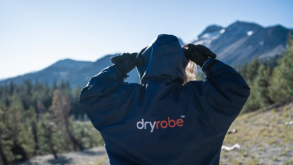In principle, you should use your registered trademark in your business exactly as it is registered. However, sometimes, for various reasons (change of the brand image, suit the needs of the market in a certain area, etc.), you may actually be using a variant of the registered trademark. Is there a risk?
Unfortunately, yes… there may be a risk. If the alteration is such that it changes the "distinctive feature" of the registered trademark, you might end up losing it or be unable to enforce it against others.
The risk of being cancelled for the alteration (49.1)
In principle, according to article 49.1 of the Trademark Law, the AIC may order you to rectify the alteration, and if the rectification is not implemented within a given period, the CTMO can cancel the registered trademark ex-officio.
However, till now, this has never happened. In fact, it would be easy to defend against such an action by claiming that the (variant) used trademark is a different and unregistered trademark. So, no need to worry too much about this
On the other hand, you might be in the opposite situation: a third party has registered a trademark and, in actual use, has substantially transformed such trademark to the point that the "variant" has become an infringement of your own. Then you might want to enforce fully the potential of article 49.1. Just be aware that this is not easy…
The risk of being cancelled for non-use (49.2)
According to article 49.2 of the China Trademark Law, a trademark can be cancelled if it has not been used for a period of three consecutive years. In an Opinion issued in 2010, the SPC specified that if the trademark is so altered that the distinctive feature of the registered trademark has been "substantially" changed, such use of the modified trademark shall not be deemed as use of the registered trademark. Therefore, if you only use the substantially changed version, your registered trademark can be cancelled for non use.
The law does not specify to what extent a trademark needs to be altered so that it runs into the risk of being considered as not used. In practice, usually, the changes in the font/case of English characters or in the type of Chinese Characters (simplified/traditional), and in the orders of the components (words/device) will not be deemed as substantial change.
However, if you really change the trademark or any of its components, it may be a problem. For example, in the "鐵力士TINIT" case, the registered trademark was 鐵力士TINIT but the actual used mark was 铁力士LISHIX. The Beijing High Court held that the use of 铁力士LISHIX is not the use of the registered trademark because the distinctive component "TINIT" was changed into LISHIX, and therefore upheld the cancellation based on non-use
Risk of not being awarded damages in a civil lawsuit (64.1)
The new amended Trademark Law (article 64.1) provides that the right owner needs to prove that its trademark has been actually used when claiming the damage. And the civil courts hold the same opinion as the CTMO about variants (sometimes even stricter). So if it is only a variant that is used, but the case is based on the registered trademark "as is", the court may affirm the infringement but refuse to grant damages because it considers that the registered trademark is not actually used.
The bright side…
In China, the courts do not accept infringement lawsuit from one registered trademark against another registered trademark. This is the result of article 1.2 of a SPC Interpretation issued in 2008, which, however, provides for an exception: when the "target" trademark has been substantially altered so that its distinctive features are changed, it is possible to file a lawsuit against such registered trademark.
For example, Lacoste was able to sue the registered trademark because it had been modified into (Lacoste's TM is ), and BMW was allowed to sue the registered , because it had been altered into TM (BMW's TM is ).
Conclusion: you need to monitor how your registered trademark is actually used. If, for some reason, the manner in which you use it steps away from the original, it is advisable to file a new trademark and make sure you maintain a sufficient amount of use of the original.










